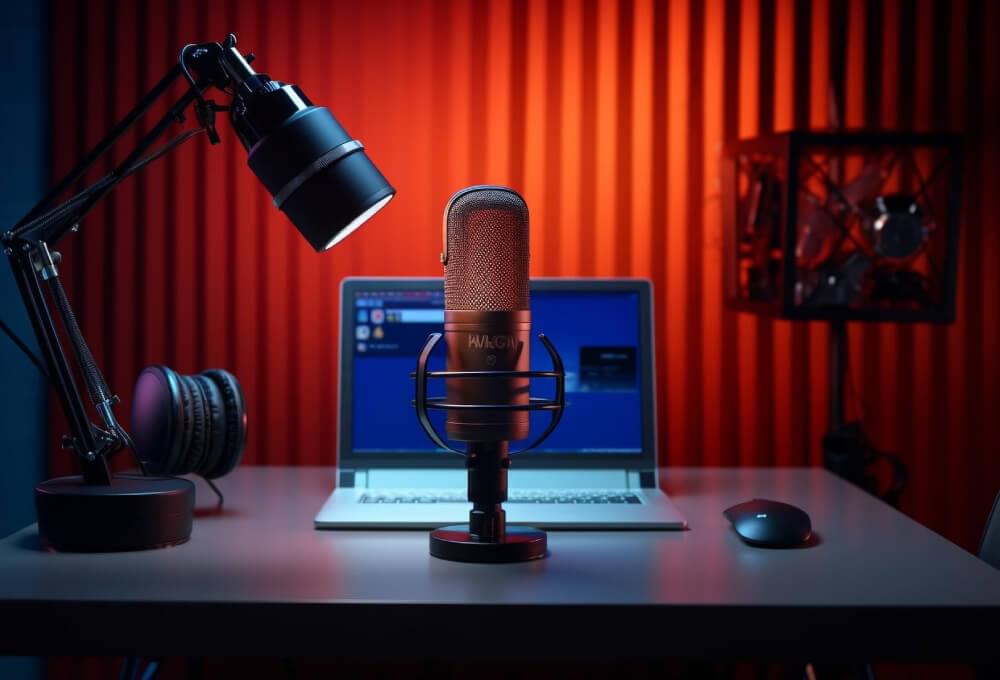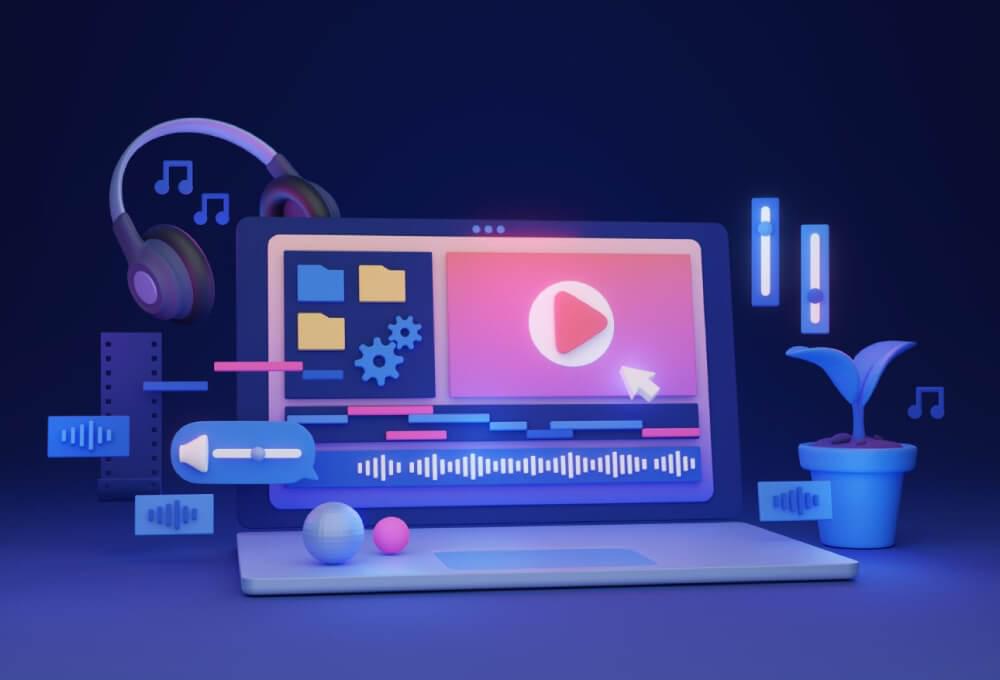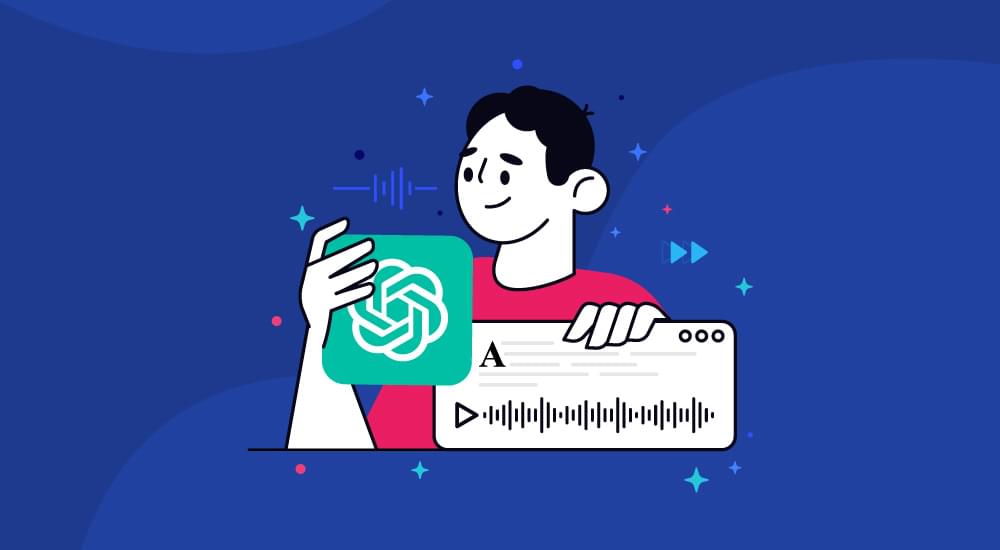accessibility tutorials
Are You Upgrading Your DIY Tutorials with Automated Narration?
You would agree that we live in a hyper-connected world where you need to communicate through various mediums to ensure your presence effectively. As you get into DIY (do-it-yourself) projects, you might discover that simply following written instructions or watching silent videos isn’t always enough to grasp complex tasks. This is where automated narrative generation guides are super necessary. They offer an auditory element that can significantly enhance the learning experience.
It’s like having a personal instructor by your side, guiding you through each step with clear and precise automated narration. This is the promise of TTS technology in DIY tutorials. It’s a method that caters to auditory learners and those who perform best with step-by-step verbal guidance. In this blog, you’ll explore the meaningful power of using automated narration into DIY tutorials and how it could reshape the way you learn and execute new skills.
What Will This Article Cover?
- The Importance of Crafting Voiceover in DIY Tutorials
- Understanding Tutorial Narration in DIY Guides
- How Automated Narration Improves DIY Tutorials
- Process of Creating How-to Audio Content for DIY Tutorials
- Benefits of Automated Narration in DIY Guides
- Essential Tools for Implementing Tutorial Narration
- How to Choose the Right Voice for Your Tutorial Narration
- How to Measure the Performance of your Voiceover?
- Bottom Line: The Future of DIY Tutorials with Automated Narration
The Importance of Crafting Voiceover in DIY Tutorials

Crafting voiceover for DIY tutorials is an art that needs attention to detail, timing, and a deep understanding of your audience’s needs. The right voice can transform a boring set of instructions into an engaging learning experience. It’s about creating a connection between the content and the learner, making complex tasks seem more approachable and less intimidating.
The use of voiceovers in DIY tutorials serves several purposes:
- Multisensory Learning: Voiceovers in DIY tutorials cater to diverse learning styles by providing auditory cues alongside visual elements.
- Improving Tutorial Quality: Voiceovers are not just optional additions but essential components that improve DIY tutorials, making them more engaging and effective for learners. In an IAB report (Interactive Advertising Bureau), Nielson reports that 79% of audio consumption occurs during multitasking. Thus, using voice-overs into your videos is essential for boosting viewer engagement.
- Accessibility and Inclusivity: Voiceovers ensure that tutorial content is accessible to a wider audience, including those who may prefer auditory learning or have visual impairments.
- Personal Connection: Voiceovers create a sense of personal connection, just like having an expert guiding and encouraging learners throughout the tutorial.
- Reassurance for Beginners: The presence of a voiceover can be particularly reassuring for beginners, offering support and guidance as they navigate through new tasks or skills.
- Emotional Engagement: A well-crafted voiceover adds emotion and emphasis to critical points, enhancing engagement and retention.
Related: 14 Remarkable Ways to Engage Your Audience with Interactive Content
Understanding Tutorial Narration in DIY Guides
Tutorial narration is an essential component of DIY guides, providing clarity and context to each step of the process. It’s the storytelling element that brings your content to life, making it relatable and easy to follow. Good narration should be clear, concise, and paced appropriately to match the complexity of the task at hand. It should also be free of jargon or, if technical terms are necessary, provide explanations that are easy to understand.
An ideal tutorial narration works as a glue that binds the visual elements of your guide with the cognitive process of learning. It helps to create a cohesive narrative that learners can follow from start to finish. Without it, viewers might find themselves lost or disengaged, resulting in a frustrating experience rather than an educational one.
In DIY guides, narration also serves to provide tips and tricks that might not be apparent from visuals alone. It can offer insights into common mistakes to avoid, or suggest alternative methods that might be better suited for certain individuals. You can create content that is informative and empowering for your audience, by understanding the nuances of tutorial narration.
How Automated Narration Improves DIY Tutorials

Automated narration generation is a ground breaker for DIY tutorials, providing a consistent and reliable voiceover option that’s both cost-effective and easy to implement. Because of the advancing TTS technology, the voices generated are more natural and expressive than ever before. This means that your guides can benefit from high-quality narration without the need for professional voice actors or expensive recording equipment.
An automated narrator voice provides greater flexibility for content updates and edits. If a step in your tutorial changes, you don’t need to re-record the entire voiceover—simply update the text, and the TTS system will generate the new narration for you. This ensures that your content remains current and accurate, providing the best possible experience for your audience.
Another significant advantage is the ability to create tutorials in multiple languages. With an ideal text-to-speech generator, you can offer your content to a global audience, crossing language barriers and expanding your reach. This level of accessibility is not only inclusive but also positions your DIY guides as a go-to resource for a diverse group of learners.
Process of Creating How-to Audio Content for DIY Tutorials
Let’s go through the simple steps to create a complete how-to audio content for your next project.
- Write a Clear Script: Start by writing a clear and easy-to-understand script for your audio content. Make sure it’s written in a way that’s easy to listen to, with clear instructions and a logical flow.
- Choose a TTS Software: Select a text-to-speech generator that fits your needs. There are different options available, each with its own voice and customization features. Pick the best text-to-speech online software that sounds natural and matches the tone of your tutorial.
- Input Your Script: Once you’ve chosen your TTS generator, input your script into the software. This is where you’ll see your words converted into spoken audio.
- Adjust Settings: Tweak the settings of the TTS engine to get the desired sound. You can adjust things like the speed of the narration, add pauses for emphasis, or change the pitch of the voice.
- Review and Edit: Listen to the generated audio and make any necessary edits. Ensure that the narration is engaging, easy to understand, and aligns with the tone of your tutorial.
- Finalize Your Audio: Once you’re satisfied with the audio, finalize it and prepare it for inclusion in your DIY tutorial.
The goal is to create a final audio product that is engaging, easy to understand, and a pleasure to listen to.
Benefits of Automated Narrator Voice in DIY Guides
The text-to-speech technology benefits us in diverse industries including education, customer support, healthcare, media and entertainment, finance, e-commerce as well as language and translation services.
The advantages of adding automated narrator voice into your DIY guides are manifold:
- Enhanced User Experience: Automated narration makes tutorials more dynamic and engaging, allowing users to follow along hands-free and focus on the task, leading to better retention of information and improved learning outcomes. It has also been Wyzowl’s State of Video Marketing Survey. They have found that around 96% people learn more about a product or service through an explainer or tutorial video.
- Democratization of Content Creation: A narrator tutorial levels the playing field for content creators by enabling those with limited resources to produce high-quality voiceovers, allowing independent creators to compete with larger organizations.
- Accessibility: Text-to-speech (TTS) technology provides a valuable option for individuals with visual impairments or reading difficulties, ensuring that content is accessible to a wider audience by providing an auditory learning alternative to traditional text-based tutorials.
Essential Tools for Implementing Tutorial Narration

To implement tutorial narration effectively, you’ll need access to the right tools. A robust text-to-speech generator is the cornerstone of automated narrative generation. Look for one that offers a wide range of voices and languages, as well as the ability to customize speech patterns and tones.
WebsiteVoice is one of the popular TTS platforms that offers:
- Accessibility features
- MP3 download for audio file
- Automatic text reader
- UVT voice speed control
- Social media sharing of the page/blog
- More fast audio conversion
- Currently available in 38 languages
- Analytics dashboard for audio plays
- WordPress plugin available
- Player widget customization
Pricing:
- Free trial available
- Starter plan is at $9/month
- Premium plan is at $29/month
- Professional plan is at $49/month
Try your free 14-days trial of WebsiteVoice now!
In addition to TTS software, a good quality microphone and audio editing software can be beneficial if you decide to mix human and synthetic voices, or if you need to make precise adjustments to the audio files generated by the TTS engine.
Lastly, consider the platform on which you’ll be publishing your DIY tutorials. Whether it’s YouTube, a personal blog, or a dedicated learning platform, ensure that it supports audio content and provides a smooth listening experience for your audience.
How to Choose the Right Voice for Your Tutorial Narration

Choosing the right voice for your tutorial narration is an important decision that can have a significant impact on the effectiveness of your DIY guide. The voice you select should match the tone and subject matter of your content. For example, a friendly and enthusiastic voice might be appropriate for a crafting tutorial, while a calm and measured tone may be better suited for technical guides.
Consider the demographics of your target audience as well. A voice that resonates with your listeners can increase engagement and make the learning process more enjoyable. Additionally, the clarity and articulation of the voice are essential, as your audience needs to understand each instruction without ambiguity.
When using TTS technology, take advantage of the customization options available. Experiment with different voices, adjust speech rates, and play with intonation until you find the perfect match for your tutorial. Remember, you should create a voice that feels like a natural extension of your brand identity.
How to Measure the Performance of your Voiceover?
Measuring how well your voiceover is doing is super important for making awesome videos. Here’s what you need to keep an eye on to see if your tutorial narration is hitting the mark:
- Engagement: Watch out for things like views, likes, shares, and comments. If people are engaging with your voiceover, it means they’re liking what they’re hearing and reacting positively.
- Conversion Rates: Pay attention to click-through rates, lead generation, and sales. If your tutorial narration is convincing people to take action, then you know it’s working and improving conversions.
- Audience Feedback: Listen to what your audience is saying through comments, ratings, and surveys. This helps you understand what your audience likes and doesn’t like about your voiceover so you can make it even better.
By keeping an eye on engagement, conversion rates, and audience feedback, you’ll be able to make videos that really connect with your audience and get them to take action.
Once you’ve got all this info, you can make your how-to audio content even better. Here’s how:
- Try A/B Testing: Test out different versions of your voiceover with small groups to see which one works best for engagement and conversion rates.
- Look at Your Data: Use tools like Google Analytics to keep track of your metrics over time. This helps you spot any trends or patterns in your data.
- Make Changes: Use what you’ve learned from your data to make improvements to your voiceover. This could mean tweaking the script, the pace, or the delivery, as well as adjusting the visuals or overall tone of your video.
- Keep Checking: After you’ve made changes, keep an eye on your data to see if things are getting better. By continuously tracking and analyzing your data, you’ll know if your improvements are making a positive impact.
These metrics like engagement, conversion rates, and audience feedback can make your voiceover even better. You’ll create videos that really connect with your audience and get them to take action.
Bottom Line: The Future of DIY Tutorials with Automated Narration
As you’ve seen throughout this blog, automated narration is not just a passing trend—it’s a powerful tool that’s reshaping the DIY tutorials domain. With the continuous advancements in TTS technology, the quality and accessibility of DIY TTS guides will greatly improve. This innovation opens up endless possibilities for content creators and learners alike, making knowledge more attainable and enjoyable.
The future of DIY tutorials looks bright, with automated narrator tutorial at the forefront of this evolution. As creators, using this technology can help you reach a wider audience, improve the learning experience, and stay ahead of the curve.
It’s a free advice to all the content creators to consider the potential that automated narrator voice holds for your tutorials. By enhancing your guides with high-quality, customizable, and inclusive voiceovers, you’ll not only educate but also inspire your audience to tackle new projects with confidence.
As you continue to innovate and create, don’t forget to try out WebsiteVoice for a well-crafted voiceover and assess the impact it can have on your content. The future of DIY tutorials is here, and it speaks volumes.









